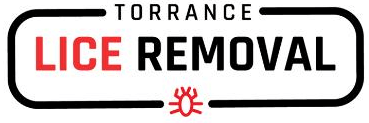Head Lice Education 101
A lice infestation (pediculosis) can make you feel like your head is crawling with a million lice. But the number of lice usually found on a person’s scalp is actually very small.
It can be hard to see head lice, let alone count them. But estimating the breadth and duration of an infestation can help you determine the best treatment for you or your child.
In this article, we’ll provide information about the number of lice and nits (lice eggs) you might see during an outbreak. We’ll also review the life cycle of lice so you can figure out how long they’ve been on your head.
Adult lice range in size from 2–4 millimetersTrusted Source, about the size of a sesame seed. In addition to being tiny, they move quickly and shy away from light. These characteristics make it hard to find lice crawling on the scalp.
You can generally expect to find less than 10Trusted Source lice on your or your child’s head during an infestation. But some people with an infestation can host 20 lice or more on their scalps at any given time.
Lice have short lives but multiply quickly:
- Adult lice can live for around 30 days on the scalp.
- After mating, a mature female louse starts to lay eggs at around 2 days. She can lay up to 10 eggs each day for most of her life.
- Nits hatch and become nymphs (young lice) in 7-12 days.
- Female nymphs grow by shedding their skin (molting) several times until they mature. This takes up to 2 weeks.
- Once they mature into adults, the females are ready to mate and lay new nits.
It’s possible to have lice for a month or longer without knowing it.
Lice feed on human blood. While they’re feeding, they simultaneously inject their saliva into the scalp. The itching you feel results from sensitization to compounds in the saliva.
Sensitization is an allergic reaction that builds up over time. Many people become sensitized to lice saliva within 4-6 weeks. You can have lice during this early period without experiencing symptoms. If you don’t notice lice or nits, you may not know you have a growing infestation on your scalp.
Some people never become sensitized to lice saliva. If you don’t become sensitized, you won’t experience itching at all. If the ongoing infestation remains unchecked, a bacterial infection may be your first clue that you have lice.
You can roughly calculate how long you have head lice through observation.
If you see no live lice and very few nits, you may have an early infestation of 1–2 weeks or less.
The location of the nits is key. If they’re flush to the scalp, they’re newly laid. If they’re one-quarter inch or more away from the scalp, they have already hatched, and your infestation is of a longer duration.
If you see nits and nymphs but no adult lice, you may have had lice for around 2 weeks. Adult lice are the size of sesame seeds. Newly formed nymphs are the size of poppy seeds and very hard to see.
If you see adult lice in addition to nits and nymphs, you may have an ongoing infestation of 3 weeks or more.
Lice do not carry disease. However, they can irritate or damage the scalp over time. If you have untreated head lice, a bacterial infection requiring antibiotics can result.
In rare, severe cases, head lice and nits can lead to iron deficiency anemia due to blood loss.
An unchecked infestation can also spread to your eyebrows and eyelashes, although this is rare. Head lice will not spread to body hair. Body lice is an entirely different parasite than head lice.

